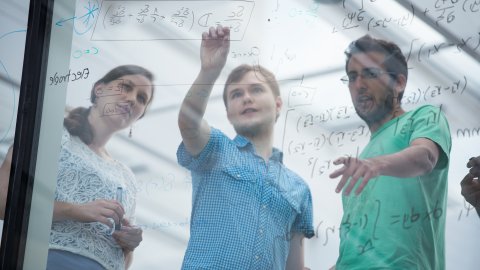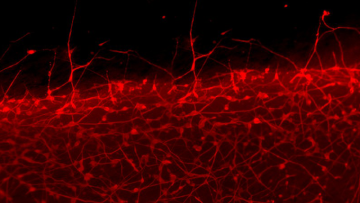What’s lumen got to do with it? Mechanics and transport in lung morphogenesis
Abstract
Mammalian lung morphology is well optimized for efficient bulk transport of gases, yet most lung morphogenesis occurs prenatally, when the lung is filled with liquid - and at birth it is immediately ready to function when filled with gas. Lung morphogenesis is regulated by numerous mechanical inputs including fluid secretion, fetal breathing movements, and peristalsis. We generally understand which of these broad mechanisms apply, and whether they increase or decrease overall size and/or branching. However, we do not generally have a clear understanding of the intermediate mechanisms actuating the morphogenetic control. We have studied this aspect of lung morphogenesis from several angles using mathematical/mechanical/transport models tailored to specific questions. How does lumen pressure interact with different locations and tissues in the lung? Is static pressure equivalent to dynamic pressure? Of the many plausible cellular mechanisms of mechanosensing in the prenatal lung, which are compatible with the actual mechanical situation? We will present our models and results which suggest that some hypothesized intermediate mechanisms are not as plausible as they at first seem.
M C Escher - Artist, Mathematician, Man
Abstract
Oxford Mathematics Public Lectures
MC Escher - Artist, Mathematician, Man
Roger Penrose and Jon Chapman
This lecture has now sold out
The symbiosis between mathematics and art is personified by the relationship between Roger Penrose and the great Dutch graphic artist MC Escher. In this lecture Roger will give a personal perspective on Escher's work and his own relationship with the artist while Jon Chapman will demonstrate the mathematical imagination inherent in the work.
The lecture will be preceded by a showing of the BBC 4 documentary on Escher presented by Sir Roger Penrose. Private Escher prints and artefacts will be on display outside the lecture theatre.
5pm
Lecture Theatre 1
Mathematical Institute
Andrew Wiles Building
Radcliffe Observatory Quarter
Woodstock Road
OX2 6GG
Roger Penrose is Emeritus Rouse Ball Professor at the Mathematical Institute in Oxford
Jon Chapman is Statutory Professor of Mathematics and Its Applications at the Mathematical Institute in Oxford
CANCELLED!
Abstract
If $R = F_q[t]$ is the polynomial ring over a finite field
then the group $SL_2(R)$ is not finitely generated. The group $SL_3(R)$ is
finitely generated but not finitely presented, while $SL_4(R)$ is
finitely presented. These examples are facets of a larger picture that
I will talk about.
More accurate optical measurements
Abstract
Lein’s confocal systems make accurate and precise measurements in many different applications. In applications where the object under test introduces variability and/or optical aberrations to the optical signal, the accuracy and precision may deteriorate. This technical challenge looks for mathematical solutions to improve the accuracy and precision of measurements made in such circumstances.
The presentation will outline the confocal principle, show “perfect” signals, give details of how we analyse such signals, then move on to less perfect signals and the effects on measurement accuracy and precision.
Collaboration may have a claim to being the most overused word in academia (and one or two other places as well), but as the world accumulates more and more data and is able to study mechanisms and organisms at an ever smaller scale, then it is inevitable that more than one expertise is needed to describe the full story.





